The Wreck review
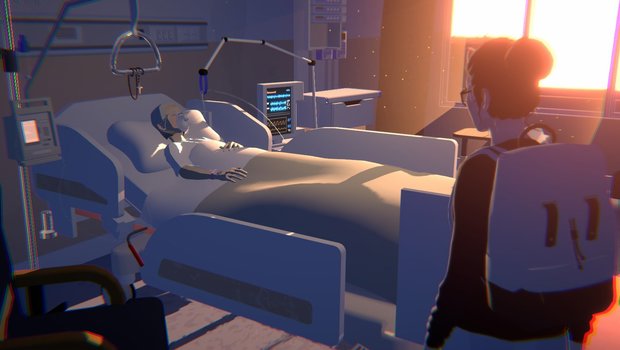
- 0 Comments
Poignant time-looping visual novel-styled adventure steers largely clear of engaging gameplay
A woman is driving through the countryside. The voice of a female singer blasts out of the radio. She stops in front of a railroad crossing, barriers slowly closing. The train speeds by seconds later, drowning out the music. Then the train passes, leaving the driver in silence. Behind the barriers, in huge black letters, the words “The Wreck” appear. At the bottom of the screen a message pops up: “Click to start the game.” The world is frozen, no sound to be heard. You click. The radio explodes once again with French lyrics, the barriers open, and the woman drives on.
Immediately you’re sucked into this story, without even knowing what’s going on. Who is this person driving the car? Where did she come from? Where is she going? Well, you’re about to find out, and what’s even better, as the player you’re supposedly the writer/director of this 3D visual novel, where you’ll have to pay close attention to all the details to uncover everything that’s hiding in the protagonist’s past to make sure she avoids a tragic fate. But are you actually the one calling the shots, or just along for the ride? Are you really the writer/director, or mainly just a witness riding shotgun?
The Wreck is developed and published by French studio The Pixel Hunt, creators of both Bury me, my Love, a tale about refugees; and Inua: A Story in Ice and Time, a chronicle based on an actual Arctic expedition. The company’s focus is converting real-life stories into interactive experiences, concentrating on the human element in the big cycle of cause and effect. And here you’ll have to confront themes like death and loss as you have to help the main character come to terms with them. There’s no real challenge due to the limited gameplay, but the artful storytelling will surely pull you in for an emotional rollercoaster ride that may just tap into your own personal fears as well.
The story in this game is about Junon, a 36-year-old television screenwriter on her way to the hospital, where her mom, Marie Demange, a famous painter, has been admitted after suffering an aneurysm. The doctors don’t know if she’ll recover, and even if she does, they’re unsure what symptoms might continue to make her life a living hell. Unknown to Junon, earlier Marie signed a form to give her daughter the executive decision on what to do if she ever found herself in such a comatose state.

Junon is telling the tale here, but in a rather peculiar fashion. Before you really start playing the game, right after you hit the Play button in your Steam library (I’d imagine the console versions work the same), you appear to open up an app called Screenplayer. You have to create a new file for Junon, in which she will write a new script, and name the project – this is in fact your save slot – and immediately typewritten letters start appearing on the page in front of you. That’s Junon, writing out her story on a sheet of paper in screenplay form. Then in an instant, the app transitions to that aforementioned intro and puts you in the driver’s seat.
Whenever you pause the game, you’ll return to the app, seeing a transcript of the last couple of lines. You can’t scroll all the way back to the beginning, though. It’s always a limited recap of recent events and dialogue, but it’s especially handy when you’ve left the game and return to continue playing at a later time. Since your progress is recorded through an autosave, you can’t go back to an earlier point in the game either. Only after finishing your playthrough completely can you then go back to replay any of the five chapters.
The Wreck is very much narrative-driven, as you can’t even walk around freely. Junon’s story is always at the forefront, and the supporting cast is very small. Her inner dialogue about everything she experiences is continually narrated, accompanied by on-screen subtitles. The game seems to take place somewhere in France, going by the signs you can see on walls and by the side of the road, and both Junon and the other actors speak with French accents. The roles are challenging and the actors really dig deep to bring their characters to life. There’s no mistaking the genuine emotion in their voices.
And they had to be good, because the graphical animation of these characters didn’t do much for me. Movements aren’t fluid but rather jerky, in a stop motion kind of way – and that’s if they move at all, because most of the time they resemble creepy shop window mannequins that sometimes move their arms, open their mouths a tiny bit to give the impression they’re talking, and switch facial expressions as if you’re watching a bad actor’s range in a portfolio slideshow. The actual cel-shaded design of the characters is very nicely done and their overall appearance continued to grow on me throughout the game, so it’s a shame the limited animation used here is so distracting. The world in which this contemporary story takes place is quite beautiful, featuring a realistic style without being photographically detailed. The presentation here is perhaps best compared with Firewatch or Life Is Strange.

There’s a limited degree of interactivity concerning Junon’s narration and conversations with NPCs. Sometimes words in Junon’s monologue are highlighted in red, meaning you can click on them to steer her thoughts in a particular direction. Sometimes you have to choose between two or very rarely three words, but often there’s only one word highlighted, making me wonder why the game paused there and waited for me to click on it when the text could just as easily have moved on automatically like it does the rest of the time (unless you click to speed them along). Actual replies to other characters appear at the bottom of the screen, but you can exhaust all options in Junon’s narration before clicking on them to ensure you get all the information the game has to offer. This usually opens up extra dialogue options to choose from.
Besides these replies, sometimes huge single words appear to the side of the screen that you also have to click, prompting general reactions or alterations to Junon’s state of mind, triggering a new sequence of inner dialogue. There’s only ever one word you can click on, once again making me question why that particular inner dialogue couldn’t have just continued automatically. It seems they only exist to prevent players from feeling like they haven’t done anything in a while, to give us at least some sense of participation, but it’s just not enough to feel worthwhile.
After the initial conversation with the doctor, where Junon is faced with deciding what to do with her mom, Junon drives away but has to swerve around a deer, flipping her car over in the process. This is where The Wreck’s actual gameplay makes its grand entrance. In the slow-motion tumble, everything that was lying loose in the car floats before your eyes in first-person view as if you’re in the vacuum of space, and one item stands out. You can click on this one, and when you do you’ll trigger a flashback from Junon’s past. This memory, presented in hazier, more dream-like fashion than the rest of the game, plays through once like a standard cutscene, and then you get the chance to watch it again, controlling it as if in a video editor. The very first time you have to do this, there are visual prompts explaining the controls. Clicking the left mouse button advances the scene, while the right button rewinds it. That’s it. Most flashbacks keep moving forward normally if you do nothing, but once you reach the end of the scene, you start back at the beginning in an infinite loop. You can only end the cycle and return to the present by finding all the hidden information in each memory, giving a bit of additional context.
This information shows up as large words, but instead of simply appearing in front of you, you have to search for them, moving the camera around with your mouse, scanning the surroundings as if you’re controlling a drone, albeit one that’s fixed on a rail and always follows the same set course. Some words will only show up after you’ve discovered others, so you’ll have to go through the entire memory several times. You can only look around a little, but you must meticulously use the advance and rewind functions in combination with elaborate mouse movements to locate each and every word. These mouse movements are quite cumbersome; it’s pretty hard to control the camera, which never seems to respond the way you want, forcing you to make wide circles to see beyond your initial line of sight. Adjusting your mouse sensitivity can help here.

There are several flashbacks throughout the course of the game, always centering around the other characters in Junon’s life, like her sister Diane and her ex, Alex. Among them you’ll travel back to the time the sisters found an injured bird in their backyard and brought it to their mom for help, the birthday party that was hijacked by Diane, the first apartment Junon shared with Alex, and a special time-lapse sequence in a bathroom showing the love and tragedies of years. Most of them are indoors, however, and I would’ve liked to see some more scenes outdoors for greater variety, since the rest of the game takes place in the hospital’s rooms, hallways, and cafeteria, with one welcome detour to the rooftop.
While all of the flashbacks involve the same basic gameplay, some come with slight variations. Some memories don’t loop but go from point A to point B, leaving you to go back again yourself to the starting point. At certain times there’s a collage of the last couple of memories, with only one piece of information to find.
Now, this may sound boring, but it really isn’t, because the panning camera in this 3D world, with its sudden movements, close-ups and wide shots, makes it all very dynamic and exciting, and it really feels like you’re on a hunt for the truth. Granted, not all memories are as riveting. Some are used more symbolically to explain parts of Junon’s personality, clearing up why she only has one path of action to follow. You can’t truly choose what she will do, except at the very end of the game where you’re faced with three choices. And even there you have the option to “edit” that ending before Junon types “THE END” in her Screenplayer app.
When you’ve found everything there is to find in a given memory, things get a bit weird. Not only do you go back to the present, but there’s a longer rewind where Junon actually returns to the time before she got into her car and drove away from the hospital. Suddenly you’re standing in front of the person you were talking to again, only this time equipped with the new information you unlocked in the memory. This opens up an extra dialogue option and lets you react in the conversation in a different fashion, and the story branches off accordingly, similar to The Butterfly Effect. Junon isn’t aware of what’s happened, however, so for her it feels like she’s experiencing everything for the first time.
Ultimately the goal of The Wreck is to “to re-experience the past, to change the present, and to embrace the future.” Junon will always find herself back in her car after each initial conversation with an NPC, forced to swerve around that deer, and crash until she has found the one way to avoid that fate. It takes some suspension of disbelief, because no matter how long Junon actually stays in the hospital and talks to more people, that deer will always be there when she leaves, forcing her into the crash.
The more time you spend with Junon, the more things begin to become familiar, recognizable. You start to identify with her more and more. Perhaps it’s just me, but I saw a lot of myself in Junon. Not so much when it comes to her personality, but to her life experiences. After all, it’s the very human stories these game developers take and make interactive, and after a while you forget you’re even playing a game. Some people might not even label this a full-fledged game. But it’s an emotional five-hour rollercoaster ride, touching on universal themes like love and relationships, loss and grief, childhood and parenthood, dependency and freedom, and any story that almost brings me to tears I consider a good one.
Final Verdict
Perhaps more than most games, your enjoyment of The Wreck will depend on how invested you feel in emotional character-driven stories, and how little interaction you’re prepared to accept. While this fictional world looks quite astonishing, with deeply fleshed-out characters and a voice cast that really brings them to life, there isn’t much to do here other than clicking on words as they pop up on the screen, and sometimes having to search harder to hunt them down. There is little actual choice in the matter, so you’re basically just watching a novel unfold. But that’s exactly how the game presents itself: as a work of art in the field of storytelling that doesn’t concern itself with whether it can truly be called a game. From a gamer’s perspective, other than an interesting fast forward/rewind function while exploring the main character’s memories, The Wreck lacks any kind of challenge. Nevertheless, I can recommend it to everyone who, like me, loves fiction in all its forms and seeks in computer games what they also look for in books and movies. But be sure to bring some Kleenex with you, just in case.
Hot take
There’s no real challenge and very little gameplay in this craftily created 3D visual novel, but The Wreck’s main character’s personal story will pull you in and leave you feeling fully invested in seeing her through the worst – and perhaps last – day of her life.
Pros
- Wonderful voice cast injects deep emotion into the characters
- Intriguing fast forward/rewind functionality in exploring memories
- Relatable character arc and captivating dialogue feel very true to life
Cons
- Very little player agency, only choosing words to guide the narrative
- Camera movements during searches quite cumbersome
- Character animation is distractingly choppy and stiff
Johnny played The Wreck on PC using a review code provided by the game's publisher.


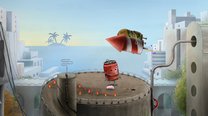

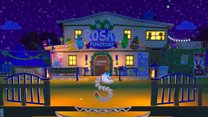

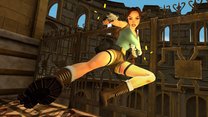
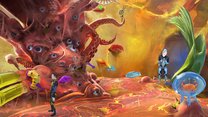
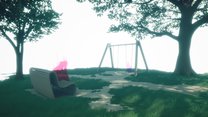
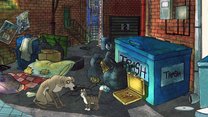
0 Comments
Want to join the discussion? Leave a comment as guest, sign in or register.
Leave a comment